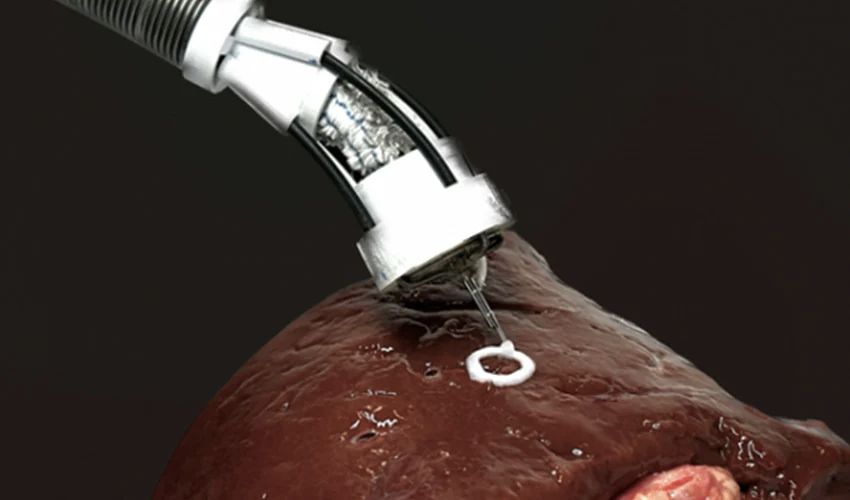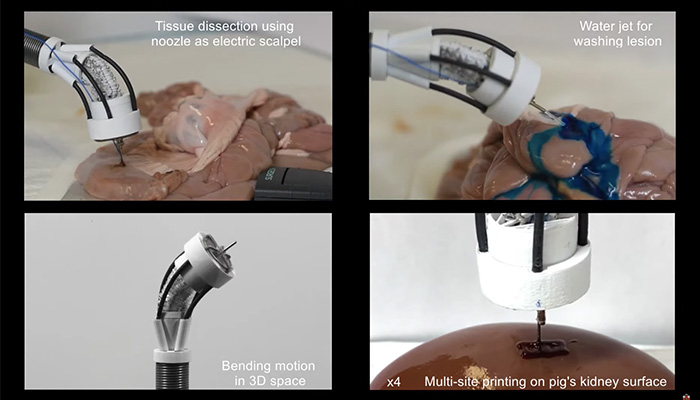3D Bioprinting to Directly Repair Human Body Organs

Every year, millions of people around the world suffer tissue damage due to disease, trauma or injury. During surgical procedures, medical professionals primarily use stitches to promote tissue healing. However, a failure during surgery can lead to complications and may cause infections. To combat this problem, researchers at the University of New South Wales in Australia have developed a miniature, flexible robotic arm to directly repair damaged human body tissue or organs using 3D bioprinting.
The medical sector increasingly uses 3D printing for research and surgery. Indeed, many 3D bioprinting projects have been launched to reproduce cellular structures, organs of the human body or to support research on serious diseases. It can also be used in other fields, such as cosmetics. Take for example beauty company Chanel, which created 3D bioprinted skin to investigate skin conditions in order to improve its product line.

The F3DB 3D bioprinter has several features (photo credits: University of New South Wales)
The F3DB, a Miniature 3D Bioprinter
Led by Dr. Thanh Nho Do and Dr. Mai Thanh Thai, the device, known as the F3DB, is a tiny, flexible 3D bioprinter. They designed the F3DB to be inserted into the body via small incisions or natural openings; bio-materials can then be applied to the surface of internal organs and tissues. The solution consists of a three-axis rotating print head attached to the end of a remotely controllable robotic arm. The nozzle can be programmed to print pre-designed shapes, but it can also be manually manipulated for more complex operations.
In addition, researchers say the F3DB can be used in hard-to-reach areas of the body such as the colon, stomach, heart and bladder, which cannot be done with current surgical devices. The smallest prototype of the F3DB has similar dimensions to traditional endoscopes, about 11-13 mm. However, the research team says it is working on even smaller products for future medical applications. In addition, according to the researchers, the 3D bioprinter could remove certain cancers, including colon cancer, using the endoscopic submucosal dissection process. The latter is a technique that consists in removing a part of an organ or tissue affected by cancerous lesions. In this case, the operator uses a water jet to clean the cancerous surface.
So far, the researchers have tested their device inside an artificial colon and a variety of materials on the surface of a pig’s kidney. They found that the printing process did not negatively affect the cells. The next step is to test the device on a live animal, and to add additional features to the F3DB, such as an integrated camera and a system that would reconstruct images of moving tissue inside the body. Within five to seven years, the engineer team at the University of New South Wales in Australia hopes that medical professionals will adopt the technology to revolutionize the way they perform surgery. To learn more about the project, the full study is available HERE. To read a more synthesized version of the project published by the Australian University, click HERE.
What do you think of this bioprinting project? Let us know in a comment below or on our LinkedIn, Facebook, and Twitter pages! Don’t forget to sign up for our free weekly Newsletter here, the latest 3D printing news straight to your inbox! You can also find all our videos on our YouTube channel.
*Cover photo credits : University of New South Wales







